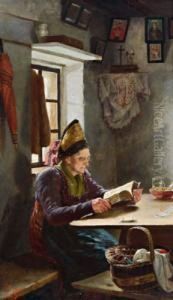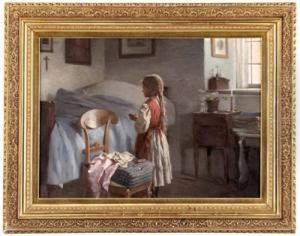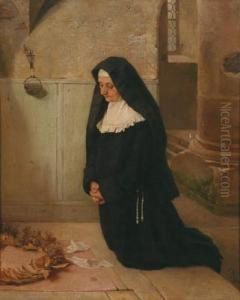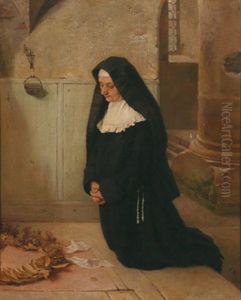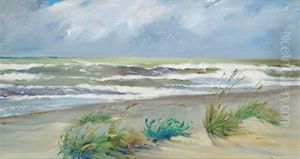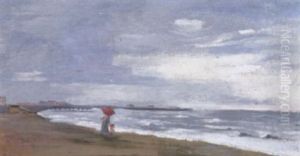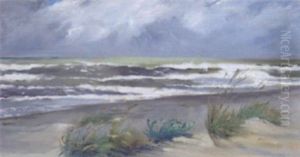Adrienne Grafin Von Potting Paintings
Adrienne Grafin Von Potting was an Austrian artist whose life and career were cut short by the events of World War II. Born in 1901, von Potting came from an aristocratic family, which afforded her the privilege of a comprehensive education and exposure to the arts at a young age. Her artistic talents became evident early on, and she was encouraged to pursue her passion for art.
Von Potting's work was primarily in the realm of painting, where she developed a style that was influenced by the prevailing movements of her time, such as Expressionism and the Secessionist movement in Austria. Her subject matter often included landscapes, still lifes, and portraits. She was known for her bold use of color and a dynamic approach to composition, which set her apart from her contemporaries.
Despite the promise of her early career, von Potting's artistic development was interrupted by the political upheaval in Europe leading up to World War II. The rise of the Nazi regime and the annexation of Austria in 1938 had a profound impact on the artistic community, and von Potting's aristocratic background and potential association with groups opposed to the Nazis put her at risk.
Adrienne Grafin Von Potting died prematurely in 1941, under circumstances that remain unclear but are believed to be related to the conflict engulfing Europe. Her death at the age of 40 meant that her artistic contributions were limited, and much of her work was lost or destroyed during the war years. The tragedy of her early demise is compounded by the fact that her artistic legacy is not as well-known as that of some of her contemporaries. However, the surviving pieces of her work continue to be studied and appreciated for their vibrant energy and historical significance within the context of Austrian art.
